Pumps are the backbone of the forecourt business and advances in technology mean that a retailer’s options are ever-increasing. The advent of Chip & PIN-enabled outdoor payment terminals means that unmanned or day/night operations and fast-fuel lanes are now secure possibilities. New fuels such as bio-diesel and LPG offer further choices. And imminent government legislation on Stage II Vapour Recovery is also set to have an impact on the decisions retailers make when installing new equipment.
With ever-decreasing margins on fuel, having the latest modernised systems can give retailers an edge and ensure their sites run as efficiently as possible, says Huw Carey, sales director for Torex Retail’s petroleum and convenience unit.
Torex Retail is offering retailers a new range of pumps, having recently formed a supplier partnership with Portugal-based manufacturer Petrotec. The deal sees Torex become one of only two companies to sell Petrotec dispensers in the UK and Ireland, and strengthens its position as a fully integrated forecourt services provider.
"In the past we occasionally bought pumps from the other main manufacturers in the UK and sold them on as part of a package," explains Carey. "We couldn’t really say we were a true supplier. This is a proper re-sellers agreement with Petrotec to offer their pumps at a very competitive price. It means we are now able to cover all the requirements a forecourt operator may have."
Torex will be selling Petrotec’s Euro range, which is already used on forecourts worldwide. Models include the Euro 2000 V2, Euro 4000 BV11, Euro 4000 CV1 and the Euro 5000 V1, and the range can also cater for LPG and AdBlue. "There’s a dispenser to suit a range of budgets and any forecourt set-up from the small independent to the large motorway service area," says Carey.
The top specification Euro 5000 V1 was showcased at the International Forecourt and Fuel Equipment Show (IFFE) in Birmingham in March. It has options for a range of fuel types, as well as a multi-media screen which can be used for advertising and promotional activity. The system can cater for different requirements, such as single- and double-sided pumps and high-speed dispensers.
Carey believes the high build quality of the range is its major selling point. "The materials used in building the dispensers will ensure long life," he says. "All panels are made of either polished stainless steel or aluminium, and the frame is made from galavanised steel. They also come with reliable, industry-leading electronics.
"To underline our confidence, we’re offering a two-year warranty plan as standard," he adds.
The range is already attracting attention, with a large quotation for one of the supermarkets in as well as interest from independent sites.
Meanwhile, Dresser Wayne Pignone is currently promoting its Global Star fuel dispenser series to the dealer market. The range was launched at the end of 2004 and offers a variety of options, including high hose, low-hose retraction and H-style. There are also LPG or AdBlue compatible models. The small footprint of the pumps is said to have made them particularly popular for space-limited sites.
OUTDOOR PAYMENT
Probably the biggest development of the past few years has been the rise of outdoor payment terminals. The majority of the major manufacturers now offer, or are developing, their own solutions and pay-at-pump is certainly something independent retailers are talking about - although their points of view may differ.
Mike Jennings, engineering director at Gilbarco Veeder-Root, says: "The growth of outdoor payment has been driven by the EMV chip card standards, which have almost removed fraud. This was such a huge problem on payment terminals before, that most retailers decided they couldn’t afford to take the risk - particularly with unmanned operations."
Jennings believes pay-at-pump allows both major oil companies and smaller independents to make better use of their expensive infrastructure. For example, sites that would otherwise close for the night will be able to dispense fuel at all hours, without the added cost and security implications of keeping staff on site.
"We suspect that now the fraud has been removed there will be more leading retailers going for both unattended and day/night operation, like they do in countries such as Sweden, Norway and Italy, where the kiosk will close and two pumps stay operational throughout the night," he says.
Gilbarco is currently field-testing its Chip & PIN-enabled payment solution and has developed its own accredited PIN pad, rather than working with a third party provider. The solution will be fully integrated into the pump and work with Gilbarco’s Passport point-of-sale system.
Torex Retail is also working on a pay-at-pump solution, which it expects to have up and running later this year. The company is looking at ways of including e-top-up or e-pay on the terminal, as well as a codax link to the car wash so drivers can also buy their ticket at the pump.
Tokheim and Dresser Wayne already have Outdoor Payment Terminals (OPTs) on the market. Tokheim’s Crypto VGA is available integrated into Quantium dispensers, as a retrofit unit or an island terminal. It features an advanced colour touch-screen, which guides the customer through the transaction. All data is entered on the same screen, rather than on a separate PIN pad.
The Dresser Wayne PT 4000 EMV terminal is available as an integrated unit within Star and Opus dispensers, as well as an upgrade option. It can also be retro-fitted to the 9000 range of pumps or come as a stand-alone payment terminal. The system has been developed in partnership with Trintech, a leading provider of payment security technology. The unit features a colour display screen on which retailers can stream advertising messages via a LAN network interface, allowing them to market directly to motorists as they refuel.
VBI’s standalone OPT, Illumina 3000, was launched last year and was recently trialled on a rural site in County Durham, where it proved popular. Results showed that awareness and confidence in the technology grew over a two-month period and average sales increased by 10%. The OPT proved particularly effective as a queue-buster during peak times.
VAPOUR RECOVERY
Pay-at-pump might offer retailers new options, but one development they won’t have a choice in will be complying with Stage II Vapour Recovery controls. These aim to reduce the harmful emissions which escape into the air as motorists fill up and will apply only to petrol.
The government issued a consultation paper on the issue at the end of 2005 and a response is now due any day. The proposed legislation will add yet another regulation for some retailers, with filling stations with a fuel throughput above a designated level - yet to be decided - having to install specialist equipment on their dispensers and adopt monitoring procedures.
Anton Martiniussen, CEO of Elaflex, a major producer of nozzles, hoses and fittings, explains: "The technology for Stage II is already mature. The equipment is approved and has been in use in many European countries for years, where there have been laws mandating this since the early 1990s."
The main components for the dispenser are a vapour recovery nozzle, such as Elaflex’s ZVA 200GR, a special hose, known as a coax hose, and a vacuum pump, which sucks the fumes back into the underground storage tank. This requires dedicated pipework, which could pose serious problems for some retailers, who may not only have to modify their fuel dispensers, but dig up their forecourts as well.
Gilbarco’s Mike Jennings says: "If they’re over the limit and have installed nothing to date and don’t have the necessary underground pipework, then they’ve got a significant issue ahead of them. For someone with old steel tanks it could be the end of the road and it could be very expensive if you’ve got very old dispensers - if they were manufactured more than 20 years ago, the chances are they won’t be able to be upgraded."
As well as providing a full range of Stage II kit, Gilbarco is planning to launch a consultancy service for retailers. This would include doing site surveys and offering advice on how to upgrade equipment. The company will also be able to retro-fit its existing dispensers, including the Euroline and SK700 models.
PROBLEM PUMPS
"Dispensers are fundamental to your business so you need to be aware of how they’re performing," says Martin McTague, managing director of Edensure.
The company’s advanced remote wetstock management service, ES3, will detect pumps that are over-dispensing or starting to run slow. It can also monitor Stage II Vapour Recovery systems.
"Manufacturers will tell you that their pumps don’t give away or drift at all," says McTague. "What we can do is just monitor that and check it. The reality is that quite a lot of pumps do give away product and they can drift quite quickly. It’s the nature of the beast. Inside the pump, you’ve got a rotor which spins inside a stator. This is going to wear after a while and as it does it will give away more product."
How quickly this happens depends on the site and the volumes it’s doing - the more fuel being pumped, the more likely the pump will drift. "At the lower end of the scale, we’ve seen £2,000-worth of product being given away," says McTague. "At the top end it’s been up to £8,000. The average is £4,000."
The ES3 service monitors the pumps constantly, meaning problems can be detected quickly. "Because we pick up a lot of data on transactions from the pumps, we can tell the retailer when they are starting to run slow," he explains. "This is usually caused by blockages in the filters. The alternative is to wait for a customer to come in and moan about how long it took to fill up, or if they’ve got lorry stands, they might end up with a queue of trucks backing up because it’s taking so much longer to get the product to pump."
Gilbarco’s Mike Jennings says that filters are likely to become blocked more quickly once retailers adopt bio-fuels like E85. "That’s been the experience in Scandinavia and Brazil," he says. One solution to this is using washable filters, which Gilbarco offers. The company is also trialling a remote predictive maintenance system.
STAGE ll VAPOUR RECOVERY
- Stage II Vapour Recovery aims to reduce emissions of harmful volatile organic compounds which escape during refuelling with petrol. These contribute to air pollution.
- The recovery equipment captures these fumes and returns them to the underground storage tank.
- The government issued a draft legislation consultation paper in November 2005 and DEFRA is expected to issue a response in the next few weeks. The paper proposes a deadline for compliance of January 1, 2010.
- It offered several threshold options for those sites that would need to comply with Stage II controls. The preferred option is for all filling stations with a throughput greater than 3.5 million litres a year to comply.
- Any new-build station with a throughput greater than 500,000 litres a year would also need to comply.
- This is expected to affect the majority of all new sites and about 20% of existing sites.
- There is also a requirement to monitor equipment to ensure systems are working. This will involve either weekly manual checks by the site operator, with records kept, or installing an automatic monitoring system.


















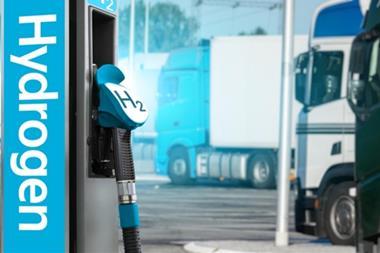
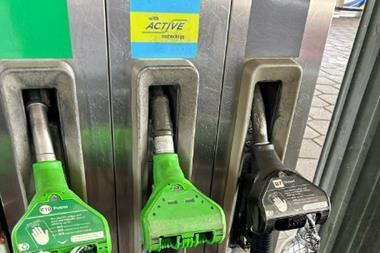
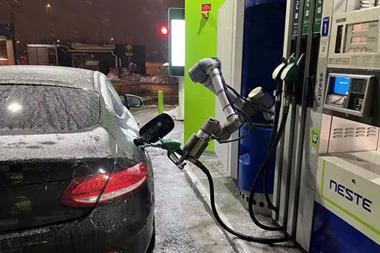

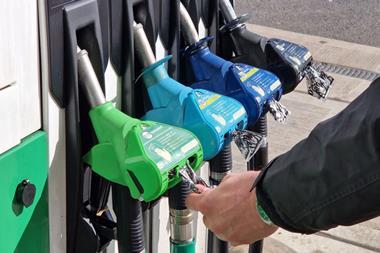
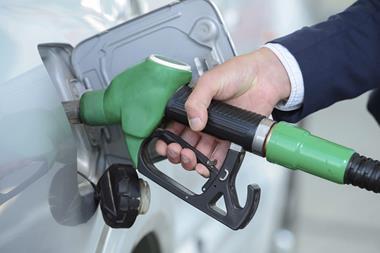

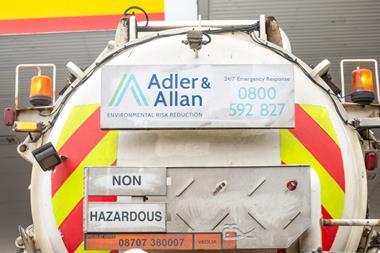
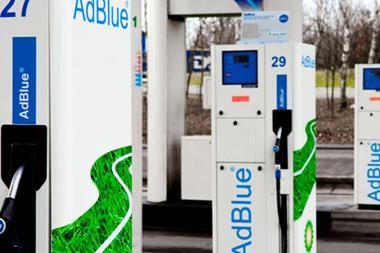
No comments yet